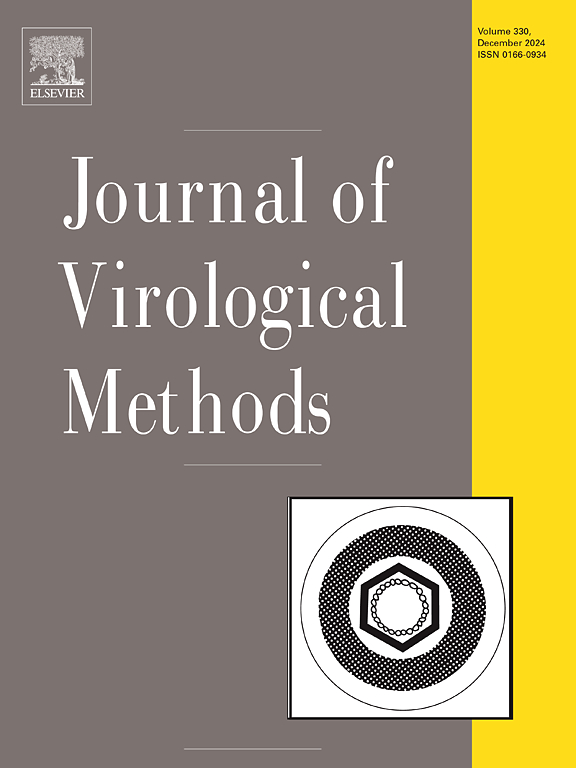无计量HIV-1定量检测系统临床性能评价
IF 1.6
4区 医学
Q3 BIOCHEMICAL RESEARCH METHODS
引用次数: 0
摘要
人类免疫机能丧失病毒1型(艾滋病毒1型)感染的重大负担,特别是在低收入和中等收入国家,强调了工业界需要为检测和管理艾滋病毒制定具有成本效益和可靠的解决办法。本研究展示了对Sansure HIV-1定量测试的临床评估结果,该测试与全自动核酸提取过程一起应用。采用sanure HIV-1定量试验和Cobas HIV-1定量试验(参考方法)对503份HIV感染者或高危人群的血液样本进行检测,通过比较结果来评估诊断的准确性。Sansure HIV-1定量检测的灵敏度为98.3% %,特异性为98.5% %。误诊率为1.6 %(8/503),仍低于5 %的可接受阈值。相关系数为0.93,与参考方法的相关性和一致性在可接受范围内。这些数据确定了Sansure HIV-1定量测试用于定量临床样本中HIV-1 RNA(病毒载量)的适用性和准确性。本文章由计算机程序翻译,如有差异,请以英文原文为准。
Clinical performance assessment of the sansure HIV-1 quantitative test system
The significant burden of Human Immunodeficiency Virus 1 (HIV-1) infections, particularly in low- and middle-income countries (LMICs), emphasizes the need for industries to develop cost-effective and reliable solutions for the detection and management of HIV. This study presents the findings from a clinical evaluation of the Sansure HIV-1 Quantitative test, applied alongside a fully automated nucleic acid extraction process. A total of 503 blood samples from HIV infected or high-risk people were tested using both the Sansure HIV-1 Quantitative test and the Cobas HIV-1 Quantitative test (the reference method), and the diagnostic accuracy was assessed by comparing the results. The Sansure HIV-1 Quantitative test showed a sensitivity of 98.3 % and a specificity of 98.5 %. Misclassification occurred in 1.6 % (8/503) of cases, which remains below the acceptable threshold of 5 %. The correlation and agreement with the reference method fell within acceptable parameters, with a correlation coefficient of 0.93. These data establish the suitability and accuracy of the Sansure HIV-1 Quantitative test for quantifying HIV-1 RNA (viral load) in clinical samples.
求助全文
通过发布文献求助,成功后即可免费获取论文全文。
去求助
来源期刊
CiteScore
5.80
自引率
0.00%
发文量
209
审稿时长
41 days
期刊介绍:
The Journal of Virological Methods focuses on original, high quality research papers that describe novel and comprehensively tested methods which enhance human, animal, plant, bacterial or environmental virology and prions research and discovery.
The methods may include, but not limited to, the study of:
Viral components and morphology-
Virus isolation, propagation and development of viral vectors-
Viral pathogenesis, oncogenesis, vaccines and antivirals-
Virus replication, host-pathogen interactions and responses-
Virus transmission, prevention, control and treatment-
Viral metagenomics and virome-
Virus ecology, adaption and evolution-
Applied virology such as nanotechnology-
Viral diagnosis with novelty and comprehensive evaluation.
We seek articles, systematic reviews, meta-analyses and laboratory protocols that include comprehensive technical details with statistical confirmations that provide validations against current best practice, international standards or quality assurance programs and which advance knowledge in virology leading to improved medical, veterinary or agricultural practices and management.

 求助内容:
求助内容: 应助结果提醒方式:
应助结果提醒方式:


